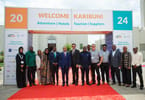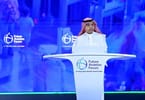ທ່ານດຣ Peter Tarlow or safetourism.com ແລະ Bruce Nierenberg of Bruce Nierenberg & Associates will be discussing why cruises could emerge from the COVID-19 pandemic in a safe. Bruce believes that if the industry puts the right protocols in place now, it could resurface as one of the safest types of a holiday experience.
This discussion will take place as part of the ການກໍ່ສ້າງ ໃໝ່ think tank in a public zoom meeting on Wednesday, June 10.
According to Bruce Nierenberg, neither the cruise industry nor any other sector of the travel and tourism industry could ever have enough plans in place for the total meltdown that just happened, but the Centers for Disease Control and Prevention have been imbalanced in their response to the cruise industry in comparison to land-based resorts and other travel venues. Yes, there were things that could have been handled better, but I have not seen one story or comment about deaths and Covid-19 cases except when it’s about cruising. In fact, while the CDC has shut down the cruise industry until it comes back with a solid plan for re-entry, why have resort business been given a free pass and allowed to reopen without such requirements?
The irony is that a cruise ship with the proper protocols and protections in place is at least as secure as a land-based hotel or resort, and in many ways safer. Why? Assuming, again, that protocols are updated for both a cruise liner and a land-based resort, there are very controlled exit and entry points on a cruise ship. The service personnel on a ship live in the vessel and don’t go home at night. At a land-based resort there are no controls in place to limit outsiders from coming into the hotel or eating meals at the hotel, even if they are not staying at the hotel and the workers leave the property every day after work and therefore are exposed to the conditions of the entire community they live in. Not so with cruise personnel. I’m not saying that any vacation alternative deserves a free pass. In fact, all vacation destinations and transportation systems need to be held accountable. For the cruise lines, they should take this opportunity, with more than 90% of ships in the world laid up, to present to the CDC a bullet-proof new health safety operation protocol that includes the embarkation process and the protection of guests when in ports of call and which protects the communities the ships visit. In all cases, the ship owners onboard the physical plants of their ships could and should install modern new technology that is available into their A/C systems that one way or another purifies the air we breathe 23,000 times per day, and if the right tech is chosen can even turn the air into a constant 24/7/365 destroyer of pathogens and bacteria on the entire vessel for passengers and crew anywhere the air flows to. These devices can be easily and economically installed in any ship HVAC system and can also be used when
individual A/C units are in each cabin. They could also apply available new high-tech solutions to all surfaces on the vessel, inside and outside on the decks, which also actively kill pathogens and virus/bacterial agents. You can even add new solutions to the laundry that are much safer than traditional laundry products and make the textiles onboard completely safe to use, as well as allowing them to continue to kill pathogens after the item is in use. It’s up to the cruise industry to do the right thing. If it does, it can develop and present a solution to the CDC that will put cruises head and shoulders above the remainder of the resort business.
These are solid quantum changes in the protections provided by vacation alternatives. It’s way above the procedures used by the industry to ‘spray and pray’, as they have done for years. We can’t reverse the results of the pandemic but it would be criminal if we didn’t take the opportunity to use this terrible event to make our industry safer in a meaningful way and give it the best product available to minimize any future attacks from the unknown disease world, which historically we can expect every 5-10 years. Until a vaccine is readily available for everyone, which will have a huge impact on vacation demand, we can also add temporarily reduced capacity and social distancing onboard and masks and gloves.
That’s ok, but there is not a ship or hotel built that was designed to make money with half its space not available for sale. Plus, vacationers and staff walking around with so much protective gear on they are ready for heart surgery is not the vacation environment people want. OK for now until a vaccine is ready, but I have seen too much of it is ‘the solution’.
That’s not the case. If the industry does the right thing, we can have normal vacation experiences for our guests. The cruise industry has been one of the most innovative sectors of tourism over the past 30-plus years. Its innovation in physical plants, itineraries and activities on board are amazing. What’s surprising is that while willing to invest billions in these amazing new products, incredible ships and resorts, they stumble through the process required to protect those investments. They can do this, and wouldn’t it be wonderful if they united and did it together? Safety, health, and security are not competitive issues for the marketplace, they are basic requirements of what people expect when they travel. By taking advantage of how ships are built, cruises have the chance to re-enter the market as the safest vacation destination on Earth. * Bruce has developed a ພິມສີຟ້າ to help the cruise industry restart post COVID-19.
Rebuilding.travel is a grassroots initiative started by the publisher of eTurboNews Juergen Steinmetz with travel and tourism experts and members in 114 countries. For more information go to www.rebuilding.travel
To be part of the Q&A and listen in with Dr. Peter Tarlow and Bruce Nierenberg on Wednesday, June 10 at 3.00pm EST ກົດບ່ອນນີ້






















